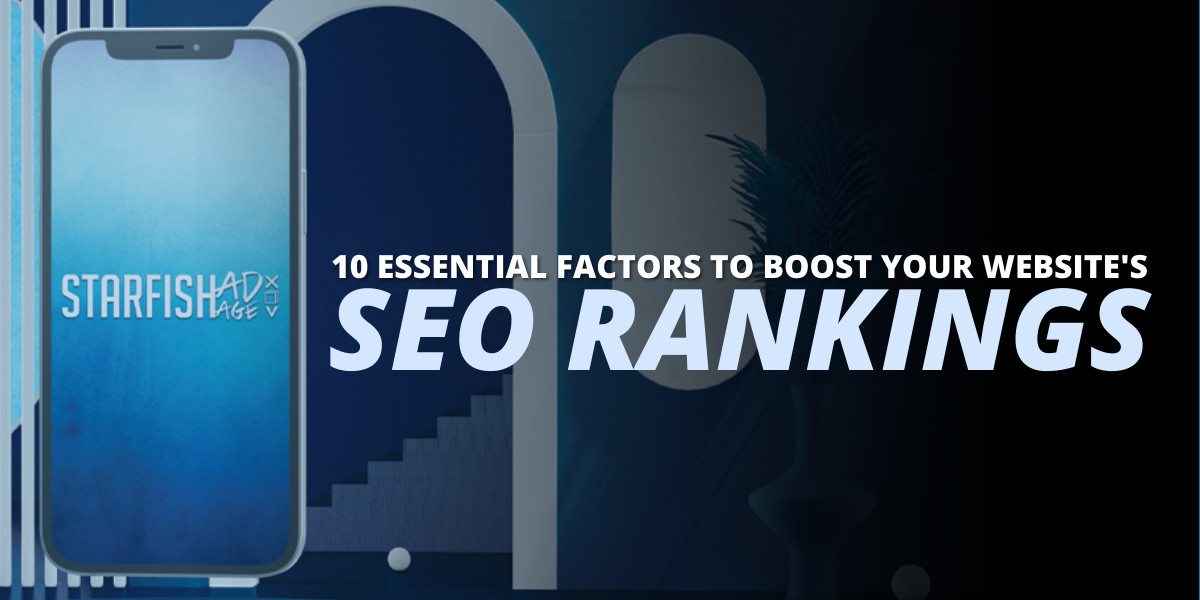
14 Digital Marketing Solutions to Grow Your Business
14 Essential Digital Marketing Solutions to Boost Your Business Growth

As a business owner, you’re well aware of the importance of having a strong online presence. In today’s digital age, one of the key aspects of establishing your brand online is search engine optimization (SEO). SEO is the practice of optimizing your website to rank higher in search engine results pages (SERPs), ultimately driving more organic traffic to your site. But what factors does Google consider when determining where your website should rank? In this article, we’ll explore the ten most critical factors that can help improve your website’s SEO.
In an increasingly mobile-centric world, it’s no surprise that mobile friendliness is a top priority for Google. With approximately 55% of worldwide traffic originating from mobile devices, Google has implemented “mobile-first” indexing. This means that Google evaluates not only your desktop site but also your mobile version.
To ensure mobile friendliness, make sure your site is responsive and provides a seamless experience across different screen sizes. Focus on intuitive navigation, fast-loading pages, and a visually appealing layout that caters to mobile users.
Site speed is a critical factor in both the user experience and SEO. Research shows that 40% of users are likely to abandon a site if it takes longer than three seconds to load. Additionally, high bounce rates resulting from slow-loading websites can negatively impact your Google rankings.
Optimize your website’s performance by choosing a reliable hosting provider, compressing images and files, minimizing the use of plugins, and optimizing your code for faster execution.
A sitemap is a file that lists all the pages, files, videos, and other important content on your website. It serves as a roadmap for search engines, making it easier for them to crawl and index your site.
Create and submit an XML sitemap to Google Search Console to ensure all your pages are discoverable. Regularly update your sitemap whenever you add or remove content to keep search engines informed about your site’s structure.
Your website’s readability plays a crucial role in engaging users and keeping them on your site. If visitors can’t read your content easily, they won’t gain valuable information, and they’re more likely to navigate away.
Ensure your website has a consistent content hierarchy, using headings, subheadings, and bullet points to break up text. Keep paragraphs short and easy to read, and use a font size and color that provide optimal contrast and legibility.
Did you know that even your image file names can impact your SEO? Google uses file names to understand what is featured in an image. Instead of generic names like “final_header_2.jpg,” include relevant keywords and descriptors in your file names.
For example, if you have an image of a red sports car on your website, name the file “red-sports-car.jpg” rather than a generic name. This practice helps search engines better understand your content and improves your chances of ranking for relevant keywords.
Alt tags, or alternative text, provide a textual description of an image in case it fails to load. These tags serve multiple purposes in SEO. Firstly, they allow search engines to understand the content of your images, improving their ability to rank your site for relevant search queries.
When writing alt tags, use complete sentences and accurate descriptions of the image content. Incorporate core keywords when appropriate, but avoid keyword stuffing. Keep alt tag descriptions concise, usually under 125 characters.
Your website’s navigation plays a crucial role in user experience and SEO. A well-designed navigation system should be intuitive and easy to understand. It should provide clear pathways for users to navigate through your site and find relevant information effortlessly.
Provide internal links to your most important pages, making it easier for users and search engines to access and index them. Well-structured navigation improves user engagement and signals to search engines that your website offers valuable content.
The structure of your website’s URLs can impact both the user experience and SEO. A clean, concise, and keyword-focused URL structure is more likely to attract clicks and generate trust among users and search engines.
Ensure that your URLs are short, descriptive, and easy to comprehend. Avoid using complex strings of numbers or symbols. Instead, incorporate your web page’s focus keyword into the URL. For example, if you have a page about affordable web design services, a suitable URL could be “yourwebsite.com/affordable-web-design-services.”
Metadata refers to the information that describes your web pages and helps search engines categorize and rank your website. It includes elements such as title tags, meta descriptions, and header tags.
Craft compelling and concise title tags that accurately represent the content of each page. Write informative meta descriptions that entice users to click on your link. Incorporate relevant keywords naturally into your metadata to improve your website’s visibility and click-through rates.
For your website to appear in search results, it must be indexable. Google needs to discover, crawl, process, and understand the information on your web pages. If search engines can’t easily crawl your site, your web pages will be considered invisible and won’t show up in search results.
Avoid blocking search engines from accessing important pages through robots.txt files or other means. Regularly monitor your website’s indexation status in Google Search Console to identify and address any indexing issues.
Improving your website’s SEO requires attention to various factors that influence search engine rankings. While Google considers over 200 factors in its ranking algorithm, focusing on these ten essential factors will help lay a solid foundation for better SEO performance.
Remember to prioritize mobile friendliness, optimize site speed, create sitemaps, enhance readability, pay attention to image file names and alt tags, ensure intuitive website navigation, maintain a clean URL structure, craft compelling metadata, and make your content easily indexable.

14 Essential Digital Marketing Solutions to Boost Your Business Growth

Learn about SEO, PPC, social media marketing, content marketing, and more to drive traffic and conversions. Read now!

Learn how to select the best digital marketing agency for your small business, the benefits of hiring an agency, and tips for maximizing your online presence.

Learn how to leverage TikTok advertising, ad formats, targeting options, and best practices to increase brand awareness, and drive sales.

Learn about Connected TV (CTV) ads, their benefits, and how they work. Understand programmatic CTV advertising for effective digital marketing campaigns.
All Rights Reserved | Starfish Ad Age LLC | 2023 | Privacy Policy